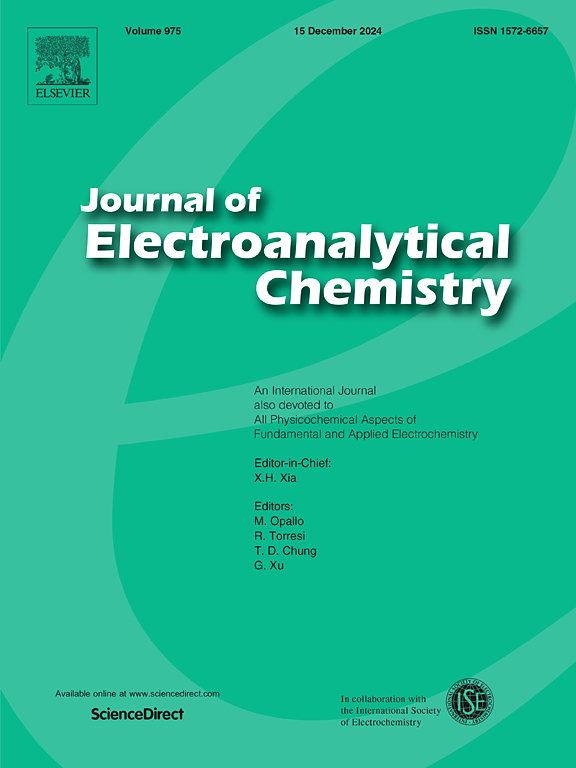Hybrid charge storage mechanism in binder-free ultrathin siloxene nanosheets-based high voltage supercapacitor
IF 4.1
3区 化学
Q1 CHEMISTRY, ANALYTICAL
引用次数: 0
Abstract
Approaches for understanding the significance of the appropriate combination of electrode-electrolyte systems on the electrochemical behavior of electrodes and charge storage mechanism inside the supercapacitor are a prerequisite for effective and stable energy storage devices. Herein, low-cost devices were fabricated using binder-free siloxene nanosheets with aprotic and protic electrolytes to study the charge storage behavior of the supercapacitors. This study demonstrates that the novel combination of binder-free two –dimensional siloxene electrode with PVA/H3PO4 gel electrolyte provides a high specific capacitance of 13.15 mF/cm2 with ∼98 % capacitance retention over 10,000 cycles. Additionally, it has a wide operating potential window (+4 V to –4 V), which increases the device's energy density and appeals to high-voltage applications. This improvement is attributed to the hybrid (capacitive and diffusive) charge storage mechanism which resulted from synergistic effects between the functional groups on the surface of siloxene nanosheets and H+ ions from protonated gel electrolytes. This work broadens the new perception toward developing cost-effective and lightweight hybrid energy storage devices using a synergistic electrode-electrolyte system for real-world applications.

无粘结剂超薄硅氧烷纳米片高压超级电容器的混合电荷存储机制
了解电极-电解质系统的适当组合对电极电化学行为和超级电容器内部电荷存储机制的重要性是有效和稳定的储能装置的先决条件。本文采用无粘结剂的硅氧烷纳米片和非质子和质子电解质制备了低成本器件,以研究超级电容器的电荷存储行为。该研究表明,无粘结剂的二维硅氧烷电极与PVA/H3PO4凝胶电解质的新型组合提供了13.15 mF/cm2的高比电容,并在10,000次循环中保持约98%的电容。此外,它具有宽的工作电位窗口(+4 V至-4 V),这增加了器件的能量密度,并吸引高压应用。这种改进归因于硅烯纳米片表面官能团与质子化凝胶电解质中的H+离子之间的协同作用所产生的杂化(电容性和扩散性)电荷存储机制。这项工作拓宽了使用协同电极-电解质系统开发成本效益高、重量轻的混合储能设备的新认识,可用于实际应用。
本文章由计算机程序翻译,如有差异,请以英文原文为准。
求助全文
约1分钟内获得全文
求助全文
来源期刊
CiteScore
7.80
自引率
6.70%
发文量
912
审稿时长
2.4 months
期刊介绍:
The Journal of Electroanalytical Chemistry is the foremost international journal devoted to the interdisciplinary subject of electrochemistry in all its aspects, theoretical as well as applied.
Electrochemistry is a wide ranging area that is in a state of continuous evolution. Rather than compiling a long list of topics covered by the Journal, the editors would like to draw particular attention to the key issues of novelty, topicality and quality. Papers should present new and interesting electrochemical science in a way that is accessible to the reader. The presentation and discussion should be at a level that is consistent with the international status of the Journal. Reports describing the application of well-established techniques to problems that are essentially technical will not be accepted. Similarly, papers that report observations but fail to provide adequate interpretation will be rejected by the Editors. Papers dealing with technical electrochemistry should be submitted to other specialist journals unless the authors can show that their work provides substantially new insights into electrochemical processes.

 求助内容:
求助内容: 应助结果提醒方式:
应助结果提醒方式:


